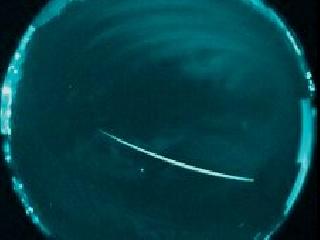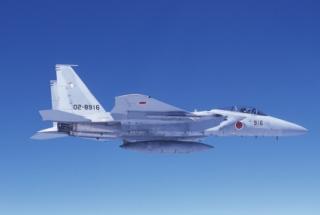
False-color image of a 2011 Geminid meteor, captured by a camera at New Mexico State University, operated by the NASA Meteoroid Environment Office in Huntsville, Alabama. A NASA/MSFC/MEO photo
NEW DELHI (PTI): Cosmic fireworks will enthrall sky gazers Thursday night as the Geminids meteor shower will be at its peak.
"Astro lovers are expected to see shooting stars whizzing past in the skies as the Geminid meteor showers will be seen on the night of December 13 and 14," Science Popularisation Association of Communicators and Educators (SPACE) President C B Devgun said.
The Geminids are known for producing up to 60 multi-coloured meteors per hour at their peak, he said.
The best time to view the shower is on December 14 at 5 AM in the east. And the good news is that in 2012, the Moon will be in a new Moon phase, so there will be no Moon to ruin the show.
One of the most spectacular meteor showers, Geminids, never seems to disappoint sky observers, he said, adding, as the point of origin of the shower lies in the direction of the constellation of Gemini, they have been named Geminids.
Geminids have another interesting fact. The source of the meteor shower is not a comet but a rocky asteroid named 3,200 Phaethon, which is in a highly elliptical 1.4 year orbit.
The usual meteors do not leave glowing trails but the brighter ones can have a yellow, green or blue hue, Devgun said.
Meteors are startling streaks of light that suddenly appear in the sky when a dust particle from outer space evaporates high in the Earth's atmosphere.
The light phenomenon in the atmosphere is called a "meteor", while the dust particle is called a "meteoroid".
When the number of meteors is large, it is called a meteor shower or meteor storm. The shower always happen on a particular day or a time period as it is associated usually with comets, Devgun said.
To see the maximum shooting stars, the area should have minimum light pollution. The showers can be seen with a naked eye and no aid is required provided the sky is clear and not hazy.
The appearance of this meteor shower seems to have been fairly sudden during the 1860s. It was first noted in 1862, when R P Greg (Manchester, England) found a radiant in the constellation Gemini for the period of December 10-12.
B V Marsh and A C Twining (United States) independently discovered the activity around the same time.
A S Herschel noted meteors emanating from Gemini during December 12/13, 1863, as well as three fireballs from near the same radiant in 1863 and 1864. During the 1870s, observations of the Geminids became more numerous as astronomers realised a new annual shower was active.
 Previous Article
Previous Article Next Article
Next Article












The Indian Air Force, in its flight trials evaluation report submitted before the Defence Ministry l..
view articleAn insight into the Medium Multi-Role Combat Aircraft competition...
view articleSky enthusiasts can now spot the International Space Station (ISS) commanded by Indian-American astr..
view article